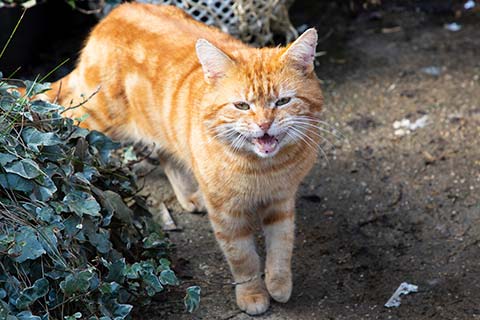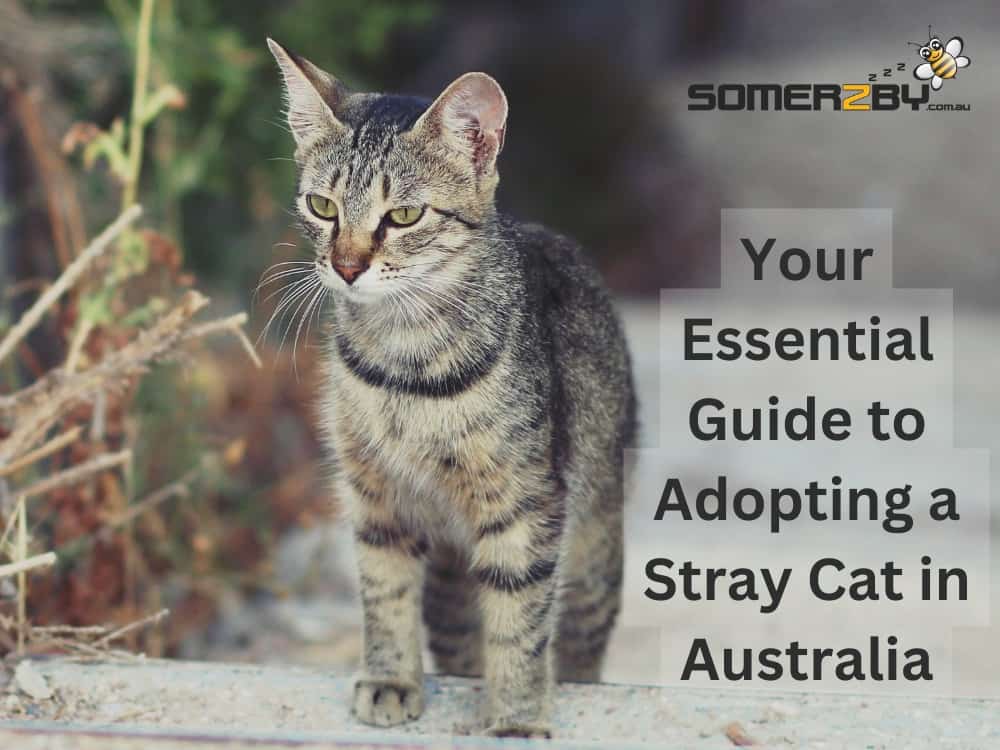Feral cats should receive rabies shots every one to three years, depending on the vaccine used. This booster frequency ensures continued protection against rabies.
Rabies vaccinations are crucial for feral cats due to the public health risks associated with the fatal disease. As outdoor cats are more exposed to potential rabies carriers like raccoons, bats, and other wildlife, staying on top of their vaccination schedule is of utmost importance.
Communities often rely on Trap-Neuter-Vaccinate-Release (TNVR) programs to manage feral cat colonies and prevent the spread of rabies. These programs also help to reduce the feral cat population humanely and sustainably. Ensuring that feral cats receive their rabies shots at the appropriate intervals is not only a proactive health measure but also a community responsibility. Regular vaccination supports a healthier environment for both the cats and the communities in which they live.

Credit: www.rspca.org.uk
The Rabies Threat In Feral Cats
Feral cats roam our streets and countryside, often unseen but very much a part of the urban and rural landscapes. These independent felines may appear self-sufficient, but they can carry a hidden danger—rabies. An infected feral cat can unknowingly spread this fatal virus, posing a significant threat to other wildlife, pets, and even humans. Vaccinating feral cats against rabies is critical in managing this public health concern.
Transmission Risks In Urban And Rural Environments
Rabies transmission occurs through the bite of infected animals. Feral cats can contract rabies from wildlife like raccoons, skunks, and bats. These interactions are common in both cities and countrysides. Urban areas, with their dense populations, amplify the risks. The virus can spread quickly through cat colonies.
Consequences Of Rabies In Feral Cat Populations
Rabies is almost always fatal once symptoms appear. An outbreak within a feral cat population could result in widespread disease and death, affecting the community’s health. Regular rabies vaccinations are essential to prevent this tragic scenario. Controlling rabies in feral cats also helps protect pet cats and humans who may come into contact with them.
Vaccination Protocols For Feral Cats
Keeping feral cat communities safe is crucial. One vital element is rabies vaccination. Such protocols vary but aim at disease control in these free-roaming felines.
Standard Vaccination Schedules
Standard practices involve initial vaccination, followed by boosters. Cats often receive their first shot at around 8-12 weeks of age.
- A second dose comes at one year, regardless of the kitten’s initial age.
- Boosters then continue every 1-3 years, based on local laws and vaccine types.
| Age at First Shot | Booster | Subsequent Boosters |
|---|---|---|
| 8-12 weeks | 1 year later | Every 1-3 years |
Challenges With Consistent Immunization
Immunizing feral cats presents unique challenges. Their elusive nature and lack of owners complicate matters.
- Trapping for vaccination requires resources and time.
- Ensuring they return for boosters is often difficult.
- Monitoring health status in such cats is not straightforward.
Vaccination drives in communities may help. Local TNR (trap-neuter-return) programs can be pivotal in these efforts.
Managing Feral Cat Colonies
Managing feral cat colonies is crucial to ensure the health and safety of both the cats and the local community. Feral cats, often living unseen, can carry diseases, including rabies. Regular rabies vaccinations are vital in protecting these animals and the humans they may come into contact with.
Trap-neuter-vaccinate-return Programs
The Trap-Neuter-Vaccinate-Return (TNVR) approach is an effective strategy to control feral cat populations responsibly. It involves several steps:
- Trap: Humane methods are used to capture the feral cats.
- Neuter: The captured cats are spayed or neutered.
- Vaccinate: Cats receive rabies shots and other necessary vaccinations.
- Return: Cats are returned to their original location, healthier and unable to reproduce.
The TNVR method ensures feral cats are vaccinated against rabies, usually every one to three years, based on the vaccine used and local ordinances. This frequency is sufficient to maintain herd immunity against rabies within the feral cat community.
Community Involvement And Public Health
Community participation is key in managing feral cat colonies effectively. Volunteers can help with TNVR efforts and monitoring of the cat colonies. Educating the public on the importance of rabies vaccinations can lead to community-wide benefits:
- Reduction in potential rabies transmission risks.
- Controlled feral cat populations through neutering.
- Healthier feral cats, less prone to spreading diseases.
Responsible vaccination practices are a cornerstone of public health in relation to feral cats. By engaging with local animal organizations or health departments, communities can create programs that serve both the welfare of feral cats and the public interest.
Legal And Ethical Considerations
Legal and Ethical Considerations surrounding feral cats and rabies vaccinations are crucial. Laws and ethics guide the care these animals receive.
Mandatory Rabies Vaccination Laws
Many areas have laws that require all cats to be vaccinated for rabies. This includes feral cats. Different states may have varying laws. But most share a common goal. They aim to protect public health and animal welfare. Below are key points about these laws:
- Check local regulations: They can vary widely.
- Proof of vaccination is often mandatory.
- Trap-Neuter-Release programs often include vaccinations.
Note: Non-compliance can lead to fines. It is important for caregivers to stay informed.
Responsibility Toward Feral Cat Welfare
People who manage feral cat colonies have a responsibility. They must ensure the health and safety of the cats. This includes regular vaccinations. There are ethical considerations too. Look at these points:
- Rabies shots protect both cats and the community.
- Good health practices prevent the spread of diseases.
- Educating the public about feral cats is beneficial.
It is ethical to vaccinate these cats. It helps maintain a healthy community both for people and the animals.
Practical Tips For Caregivers
Caring for feral cats is a responsible task. These wild cats need love and care too. Rabies shots protect them and us. This guide will help you manage their healthcare like a pro.
Safe Handling Of Feral Cats
Keep everyone safe while handling feral cats. Because feral cats can scratch and bite. Wear gloves and use humane traps.
- Learn safe trapping techniques
- Use a professional cat trap
- Keep trapped cats calm with covers
Securing Funding And Veterinary Support
Shots cost money. Support keeps cats healthy.
- Reach out to animal charities
- Ask vets for discount programs
- Organize fundraisers within your community
| Initial Shot | Booster Shots |
|---|---|
| As early as 12 weeks old | Every 1-3 years |
Future Of Rabies Control In Feral Cats
The future of rabies control in feral cats is evolving rapidly. With fresh approaches to vaccination and growing awareness, our communities are becoming safer for both humans and wildlife. Cutting-edge strategies are now emerging to effectively immunize these elusive felines against rabies, a crucial step in public health and wildlife conservation.
Innovations In Vaccine Delivery
New tactics are revolutionizing how we deliver rabies shots to feral cats. Traditional methods often fall short due to the elusive nature of these animals. What’s on the horizon?
- Edible vaccines – A game-changer, allowing cats to get vaccinated while they eat.
- Baits with vaccines – Strategically placed, they ensure wider coverage.
- Drone technology – Potential to deliver vaccines in hard-to-reach places.
Vaccine delivery is easier and reaches more feral cats, making communities safer for everyone.
Implications For Wildlife And Human Health
Improved rabies control in feral cats is crucial for healthier ecosystems. A vaccine-rich environment keeps diverse animal populations in check. Humans benefit directly from reduced risk of rabies transmission. Key points include:
| Impact Area | Benefits |
|---|---|
| Wildlife Protection | Less disease spread among animals |
| Human Safety | Lower chance of rabies incidents |
| Economic Savings | Reduced healthcare and control costs |
The impact of these advancements extends far beyond just the feline world. They are vital for the wellbeing of entire ecosystems. Sturdy health indicators for both wild and urban environments hinge on efficient rabies control among feral cats.
Frequently Asked Questions On How Often Do Feral Cats Need Rabies Shots
How Often Should Outdoor Cats Get Rabies Shots?
The frequency of rabies vaccinations for outdoor cats can vary depending on the specific vaccine used and local regulations. In many places, the standard recommendation is to vaccinate outdoor cats against rabies annually. However, some vaccines provide protection for up to three years, and the vaccination schedule may be adjusted accordingly.
It’s crucial to adhere to local laws and guidelines regarding rabies vaccinations for cats. Many areas have specific requirements for the frequency of rabies vaccinations, and failure to comply may have legal consequences. Additionally, regular vaccinations help protect both the cat and the surrounding community from the rabies virus.
How Long Does Rabies Vaccine Last In Feral Cats?
The duration of immunity provided by a rabies vaccine in feral cats can vary based on the type of vaccine used and the specific protocol followed. In general, most rabies vaccines for cats are designed to provide protection for one to three years. However, some vaccines may offer longer durations of immunity.
It’s important to note that feral cats may not receive regular veterinary care, making it challenging to determine their vaccination history. Additionally, the effectiveness of a vaccine can be influenced by various factors, including the cat’s health, age, and exposure to the rabies virus.
If you’re involved in the care of feral cats or are considering providing vaccinations, it’s recommended to consult with a veterinarian. They can guide you on the appropriate vaccination protocol, considering the specific circumstances and local regulations. In some areas, rabies vaccination for cats may be a legal requirement, and keeping vaccinations up to date is crucial for public health and the well-being of the cats.
How Often Do Feral Cats Have Rabies?
Feral cats can occasionally contract rabies. The actual prevalence varies by region and local wildlife rabies rates. Regular vaccinations reduce this risk significantly.
Should You Vaccinate Feral Cats?
Yes, vaccinating feral cats is recommended to protect them from diseases and reduce health risks to humans and other animals.
Conclusion
Safeguarding our feral feline friends from rabies is non-negotiable. Regular vaccinations, typically once a year, provide the shield they need. Responsible management of these community cats means staying informed and proactive about their health. Your actions could be the vital barrier preventing the spread of this fatal virus.
Let’s keep our whiskered wanderers safe and sound.


